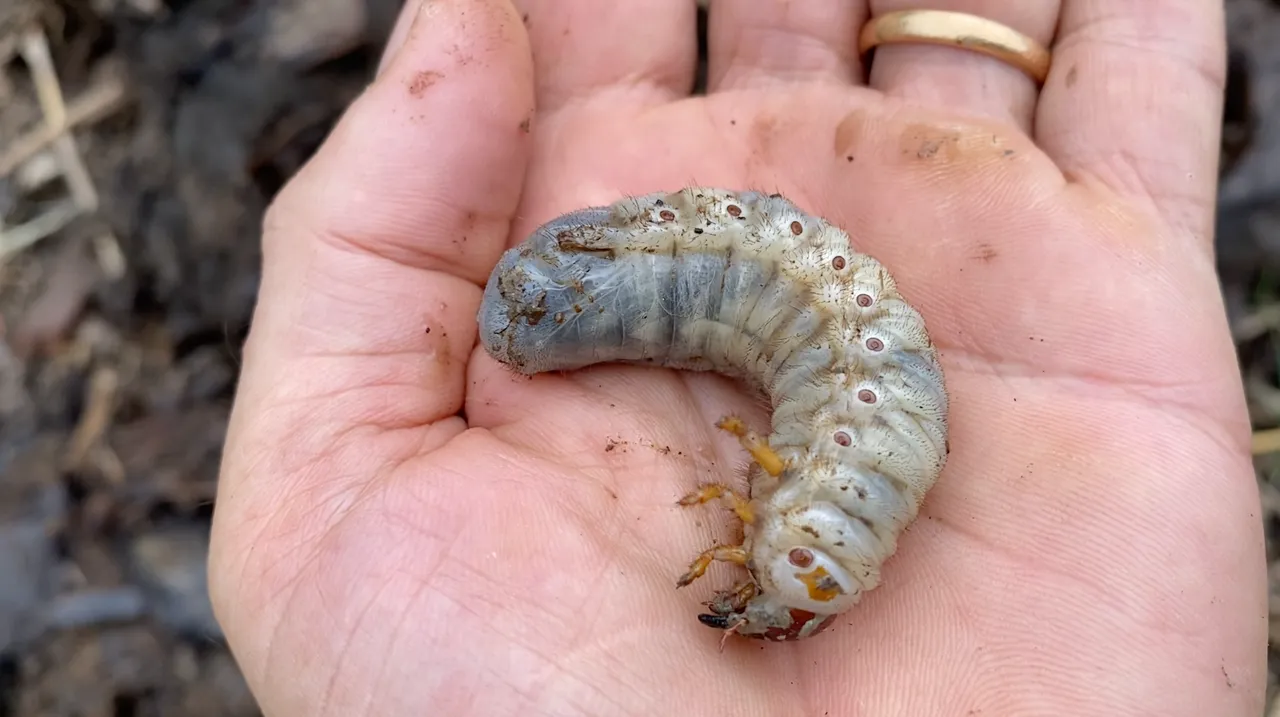
I come from a composting culture where kitchen scraps and garden trimmings are almost religiously thrown in a bin or pile for composting. In Thailand, this never happens. Whatever can be burned is burned and the rest thrown to the garbage or possibly fed to animals. Nobody here composts, or at least it’s rare, and to me that feels like such a waste of 'waste'.
As soon as we moved from Bangkok to our lovely big garden in Petchaburi I started a compost pile knowing how much the heavy clay soil needed improving. I’m sure one of the reasons Thai people do not compost is the risk of giving the local snake population, particularly Cobras, an attractive place to lay their eggs. I can understand that, but was confident that a chicken wire fence around the compost would make it unlikely that I would ever have to tiptoe around baby Cobras.
I kept adding to it and watered it in the dry season. I also started two more piles elsewhere for garden cuttings. After a few months I started poking around to see how things were going. I was surprised at the total lack of earthworms until I realised it made sense given that we have six months of waterlogged soil followed by six months of soil baked rock-hard. Tough conditions for a worm. I had found one or two under the oldest trees where a thin layer of leaf-litter had accumulated but none actually in the soil itself.
Yet something was doing a reasonable job at making compost out of kitchen scraps. A little more digging and I found the answer. Enormous thumb-sized white grubs with hard, light brown heads containing some fearsome-looking mandibles. They had six small legs but seemed to move around more by rippling their bodies like a fly maggot. These fat bodies were soft and wrinkled. If touched they bent into an almost circle that looked like a protective measure but it was hard to see how it protected them. I could even see the compost process at work as their abdomens darkened at the back. Massive enough to see details invisible in smaller larvae, they had an ugly kind of beauty. I found more than a dozen this size plus a similar number of smaller ones and even more tiny ones. The compost’s lowest layer consisted of the pellets of their poop, which retained their shape. I had no idea if it was the same quality as what worms produce but they seemed to be doing a good job so I left them to it.
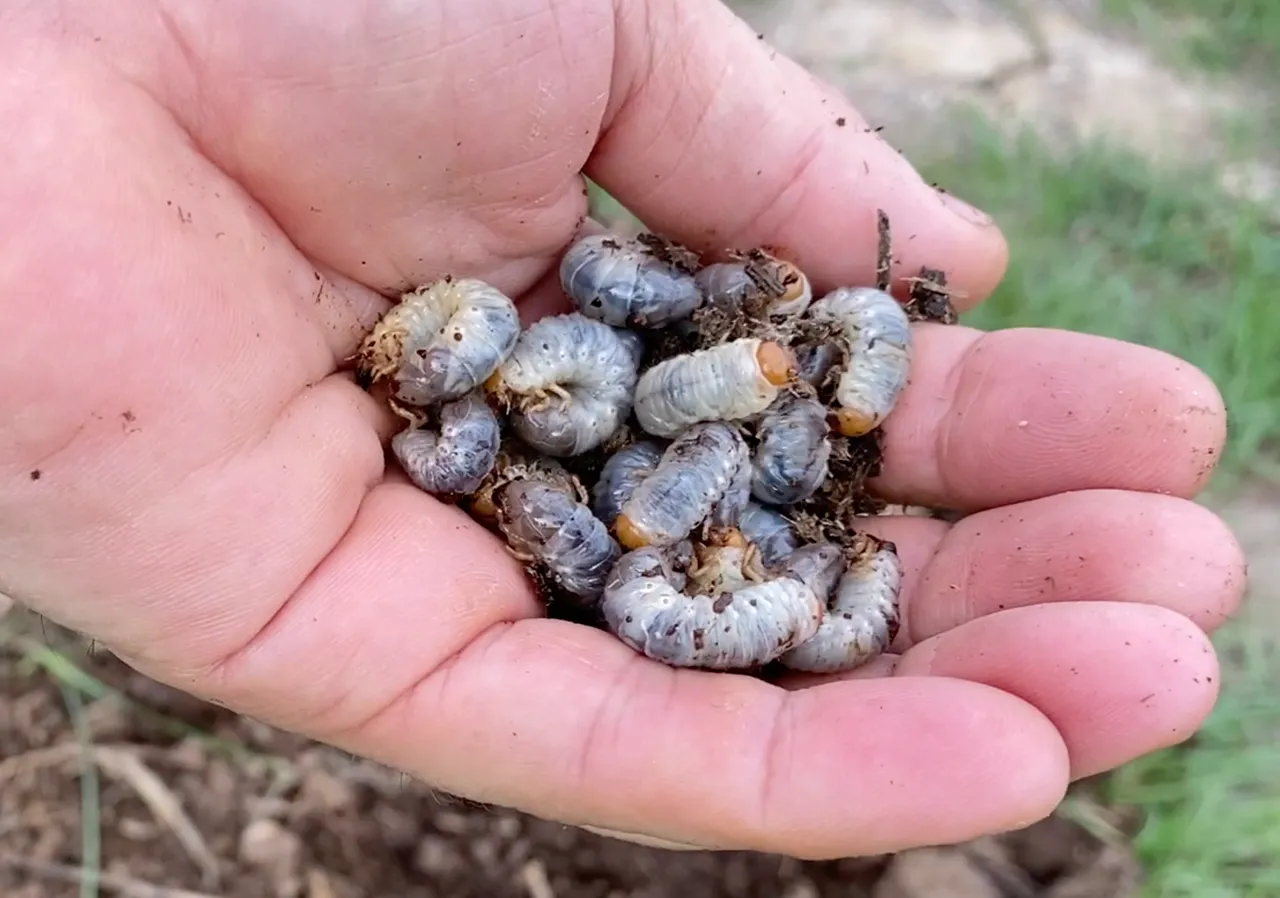
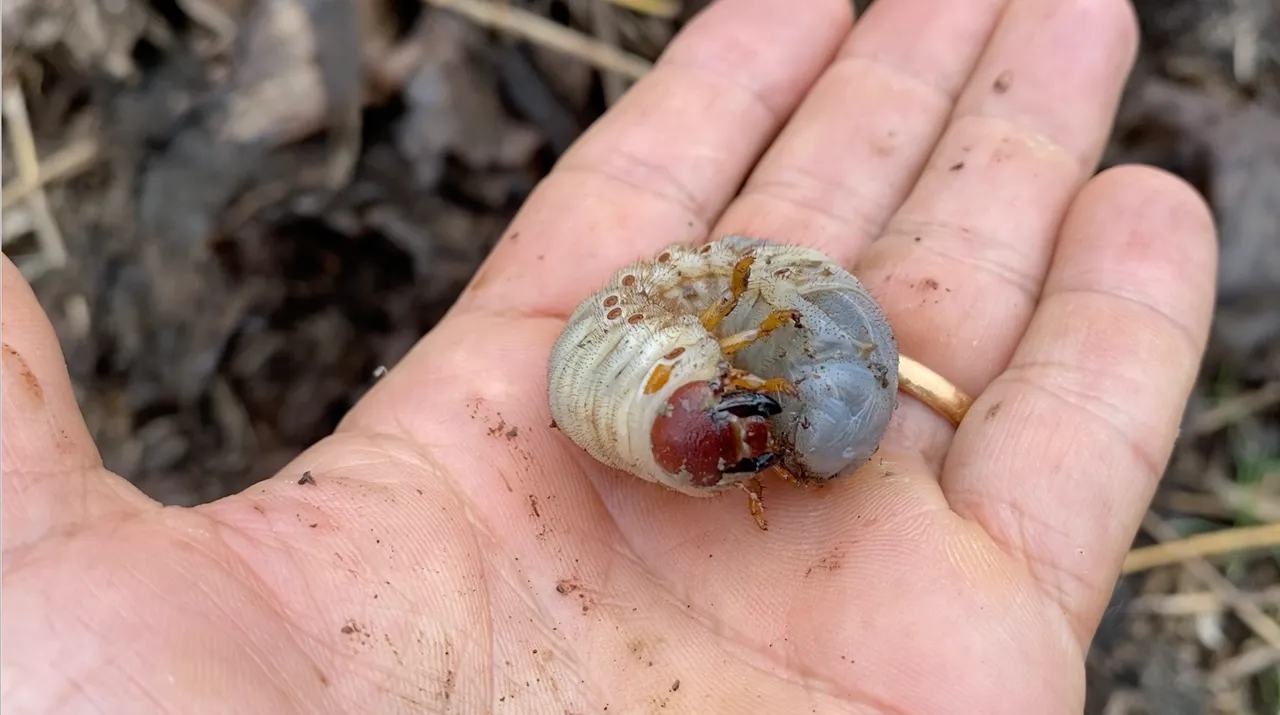
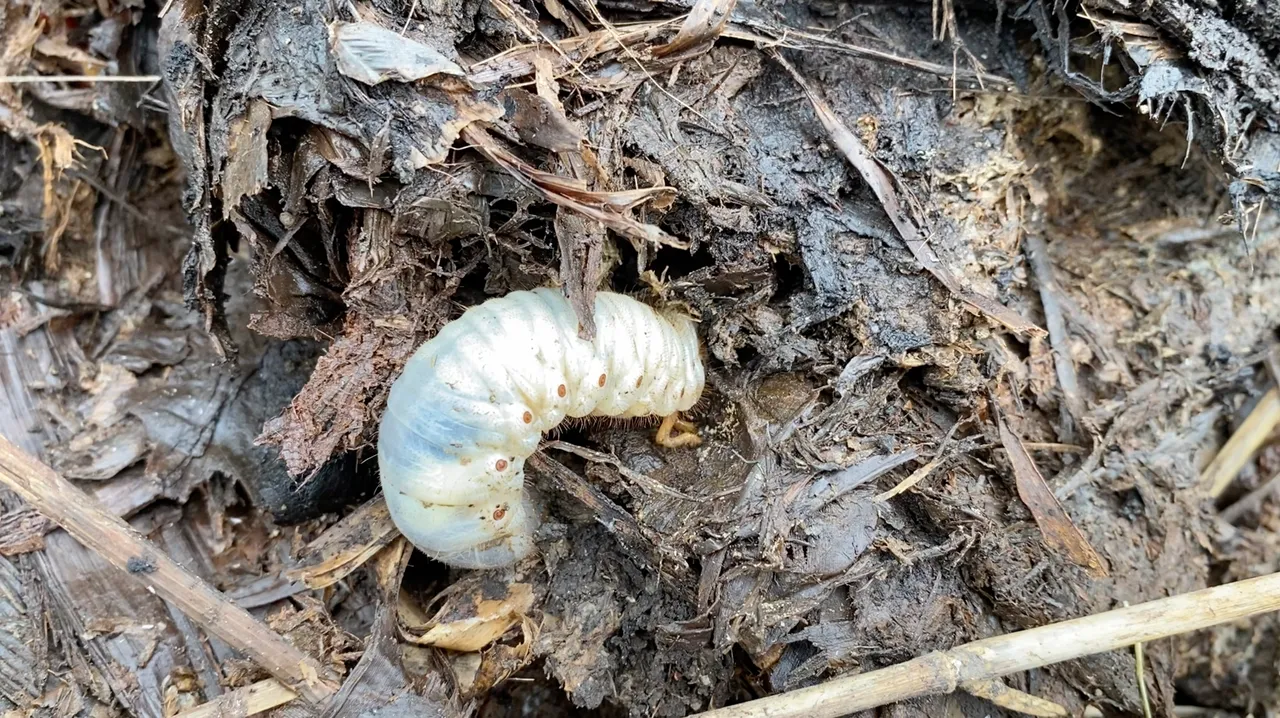
In the meantime, I had planted some young coconuts palms that were struggling. At first I blamed the clay soil but then noticed the leaf damage and the large holes burrowed into the palms’ soft crowns. A little online research and things clicked into place. The damage was being caused by adult Coconut Rhinoceros Beetles and what I had found in the compost pile were their larvae. I was providing perfect conditions to breed a serious pest. I'm sure this is another major reason why composting has never become part of the food production culture in Thailand.
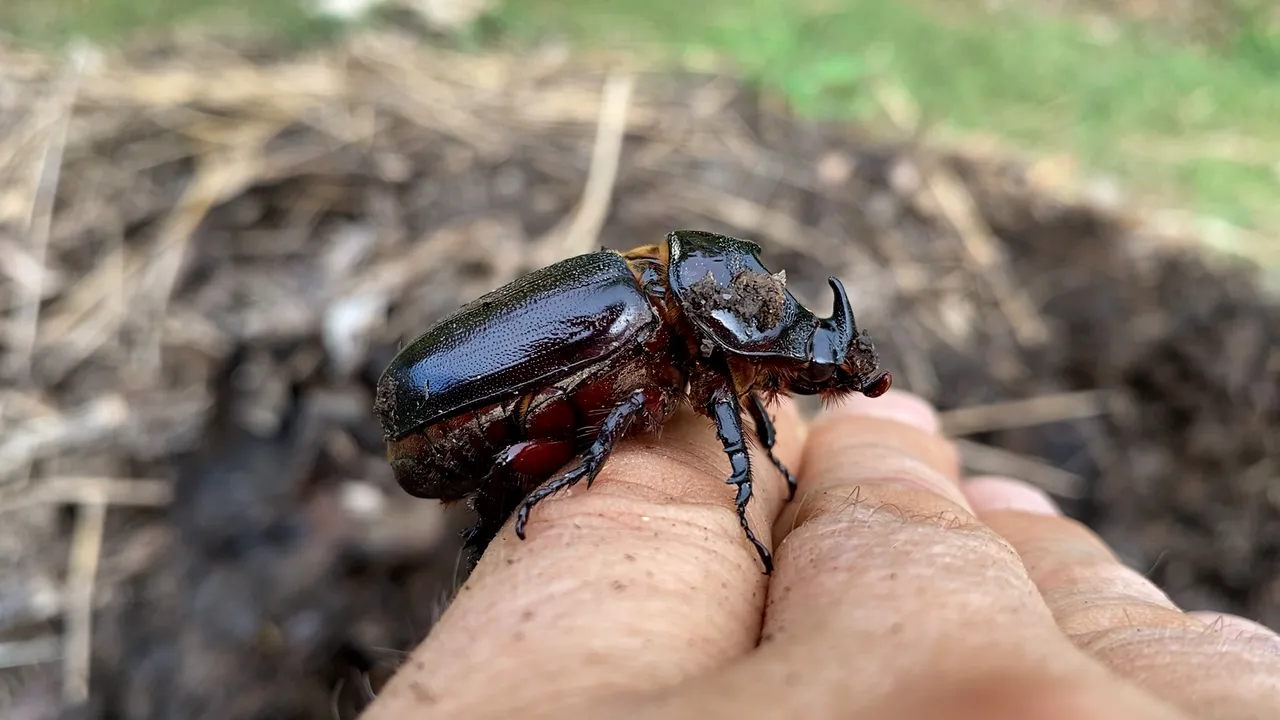
I didn’t want to give up on composting so came up with two ideas. First, I added a chicken wire roof to the piles so they were completely surrounded by a small enough mesh size that the emerging adults could not leave. My plan is to keep it open at first so that any adults around can lay their eggs and the larvae help with composting but then close it before the larvae mature. Secondly, I dig through the piles occasionally and remove all the large grubs, which go into the pond for the fish. Both these tactics get a bit tedious and I am not consistent enough for it to work perfectly. But I can at least cut down the adult population considerably. Enough to be fairly sure that I will not be responsible for the death of all local coconut palms. In my lowest moments I do still imagine angry villagers at our gate with flaming torches and pitchforks.
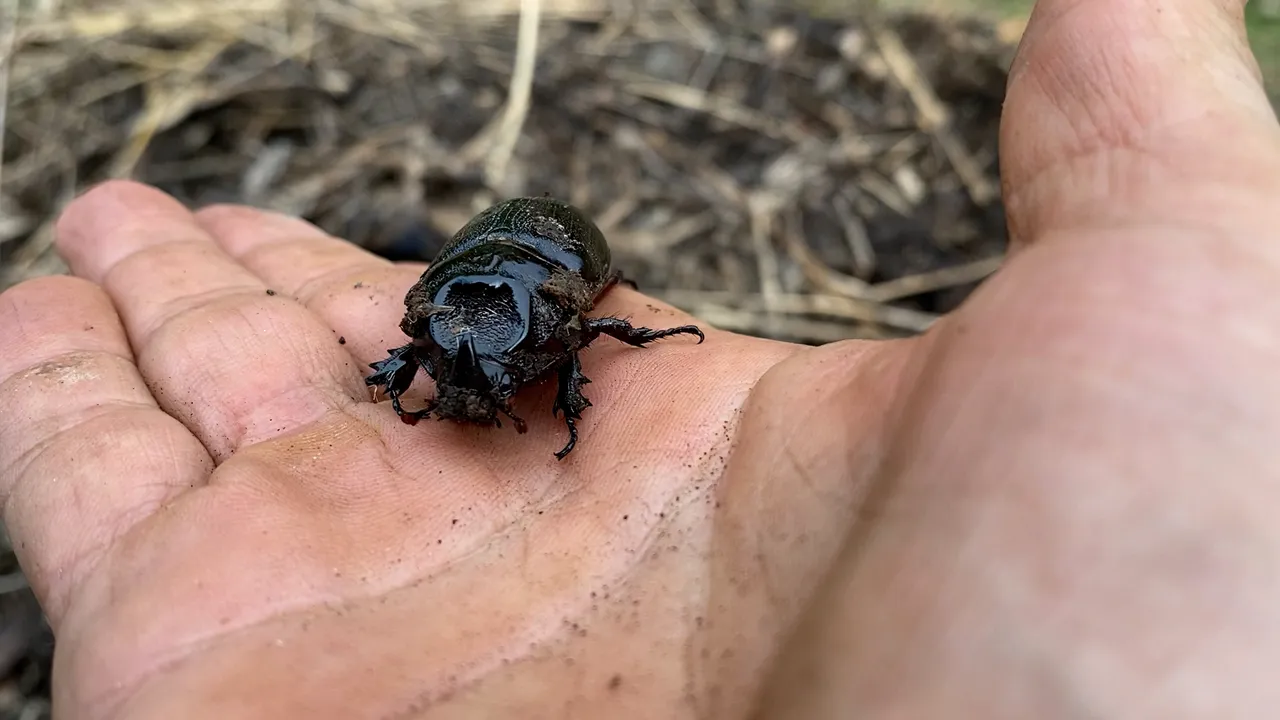
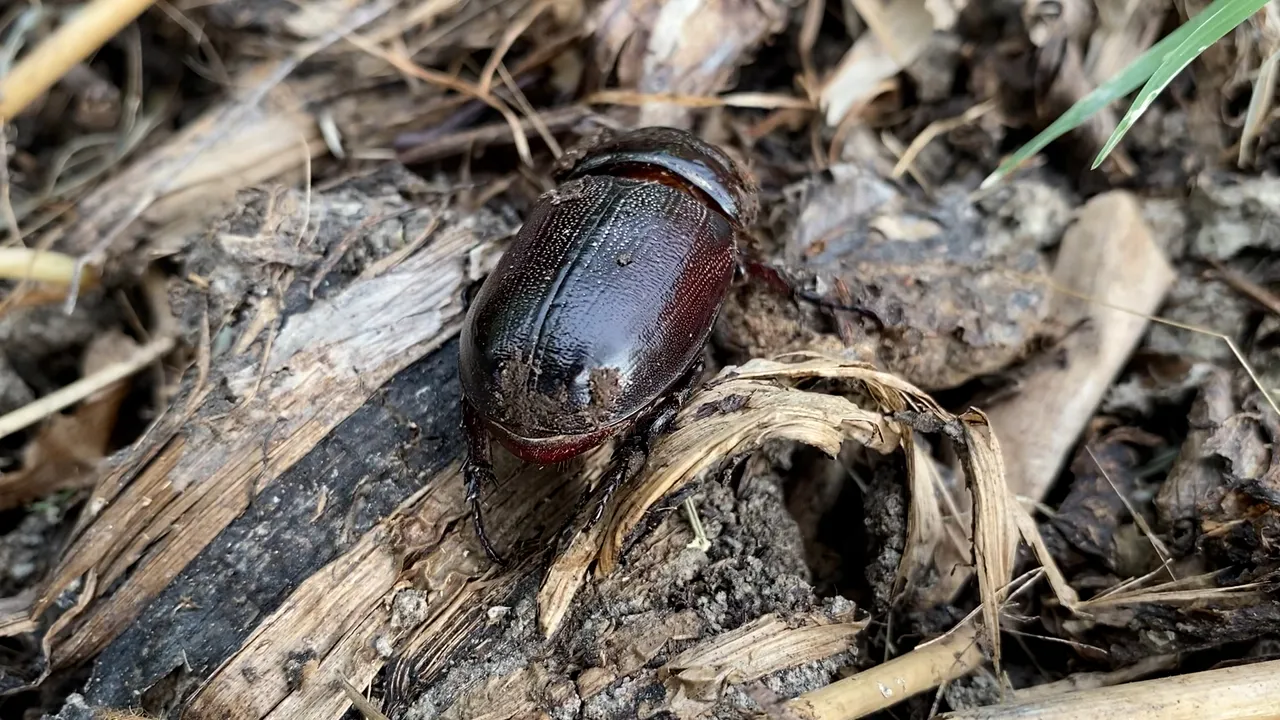
We do now get an occasional earthworm in the compost so I could try totally excluding the Rhinoceros Beetles. But I have also read that high earthworm populations are far more a phenomenon of temperate climates than tropical so I might struggle to make it work without the larvae. I would also miss finding these gigantic brutes writhing around as my digging exposes them. It's a matter of balance. Some but not too many, and accept a bit of palm tree damage.

